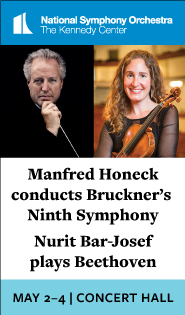Jenny Lin goes deep in bracing program of Shostakovich Preludes and Fugues

Jenny Lin performed music of Shostakovich Wednesday night at the National Museum of Women in the Arts.
In designing a concert program, Jenny Lin has an uncanny knack for illuminating obscure corners of the repertory.
Such was the case with her recital Wednesday night in the free concert series at the National Museum of Women in the Arts. The pioneering pianist performed selections from Shostakovich’s 24 Preludes and Fugues, Op. 87. (Lin recorded this music beautifully for Hänssler Classic a decade ago.)
Shostakovich composed his 24 Preludes and Fugues in the early 1950s, in a style that is more tonal and retrospective than much of his earlier music. The Russian composer drew inspiration from the towering example of the form, Bach’s Well-Tempered Clavier, often alluding to his model in overt ways. In her usual savvy way, Lin sandwiched two Shostakovich examples each around three selections by Bach, all from the first volume of the WTC, in pairings that highlighted connections between the two composers.
The link was perhaps strongest in the opening group, in the direct references by Shostakovich in his C major prelude to Bach’s famous prelude in the same key. Lin’s Bach was solidly modern, with extensive use of the sustaining pedal to flesh out the arpeggiated patterns of the C major prelude. In both Bach and Shostakovich, she took advantage of the range of touch, volume, and articulation on the modern piano to differentiate each statement of the fugue subjects—for example, brilliantly revealing the overlapping of themes in stretto passages.
Shostakovich’s Prelude and Fugue in A Minor rounded out the first grouping, following the composer’s grouping of keys according to the circle of fifths but keeping the relative major and minor keys grouped together. Lin has remarkably adept finger technique, shown off to brilliant effect in this prelude, with its whirring cascades of sixteenth notes. The fugue in the same key percolated with crunchy rhythms, as Lin went easy on the pedal to vary the texture.
Lin was less concerned about key relationships in the remaining two groupings on the first half, matching Bach and Shostakovich pieces more for similarity of musical themes or textures. The neo-baroque rolled chords of Shostakovich’s Prelude in D Minor meshed aptly with repeated harmonic patterns in Bach’s Prelude in E Minor. Likewise Shostakovich’s turbulent Fugue in D Minor, with its crispy staccato repetitions, matched the flurrying subjects in Bach’s Fugue in E Minor, as well as Shostakovich’s Fugue in E Major that followed it.
The three pieces of the final set made grander statements, or more humorous ones. The subject of Shostakovich’s Fugue in A Major, on a Scarlatti-like trumpet fanfare motif, was echoed by the circus-riot air of the composer’s Prelude and Fugue in B-Flat Major. In between them, by way of contrast, was the exquisite sadness of Bach’s Prelude and Fugue in C-Sharp Minor, interwoven lines piling up melodic gestures in stately gloom.
For the second half, Lin paired Shostakovich with later composers influenced by him, music that was not in prelude and fugue format. In a set of three Preludes by Galina Ustvolskaya, once a student of Shostakovich’s, the first two selections were surprisingly austere, meandering lines in Prelude No. 1 and plain, mechanical motifs in Prelude No. 2. By way of contrast, Prelude No. 5 created a more threatening atmosphere, percussive strokes seeming to evoke the sound of machine guns. Shostakovich’s Prelude and Fugue in G Minor provided entirely different shades, a blissful serenade and genteel, wavering fugue.
Philip Glass’s new Passacaglia, which he has called Distant Figure, was a fitting reminder of Lin’s association with that composer, heard at the Kennedy Center earlier this year. Its repetitions wore thin long before the end, and Glass’s piece failed to hold up well, perhaps inevitably, placed next to the magisterial final Prelude and Fugue in D Minor from Shostakovich’s set. On the fugue subject drawn from the prelude, Lin cranked up the excitement as the piece accelerated to an ecstatic conclusion.
A long encore showed the best side of Glass’s solo piano music, with the frenetic pulsing obsession of Etude No. 6, given a serene sheen by Lin.






